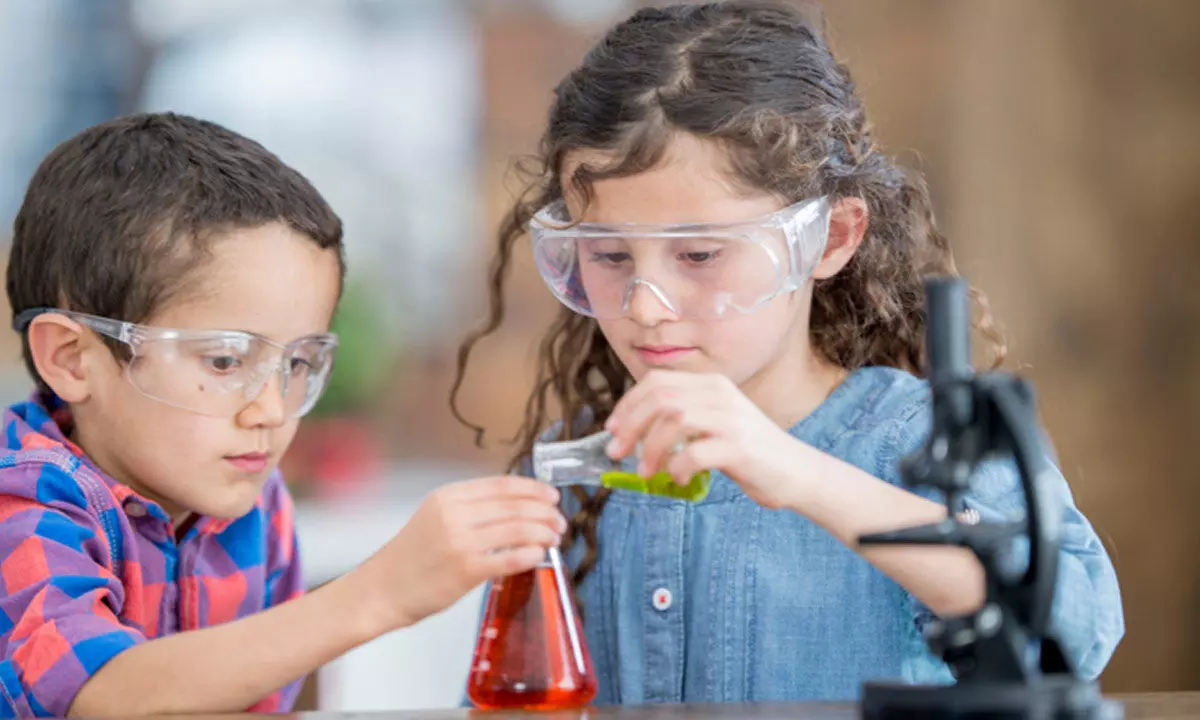Hands-on approaches to enhance theoretical understanding

Learning by doing prioritizes hands-on experience over purely theoretical knowledge, where students actively participate in experiments, projects and problem-solving rather than passively receiving information
Learning by doing prioritizes hands-on experience over purely theoretical knowledge, where students actively participate in experiments, projects and problem-solving rather than passively receiving information. Known as kinesthetic or hands-on learning, this method moves beyond traditional lectures, fostering deeper understanding and engagement.
Benjamin Franklin succinctly captured the essence of hands-on learning with his famous quote: “Tell me and I forget. Teach me and I remember. Involve me and I learn.” This timeless wisdom highlights the effectiveness of involving students in the learning process to achieve true comprehension.
Benefits of Hands-On Learning
Hands-on learning transforms the educational experience from static reception to active participation. This shift not only makes learning more enjoyable but also significantly enhances the ability to grasp, retain and recall information. When students are actively engaged, they are more likely to internalize and retain the knowledge they acquire. Scientific studies support this, showing that children learn 50% by hearing, 80% by seeing and 100% by doing.
Engaging in diverse activities that involve multiple senses—such as touch, sight, sound, smell, and taste—creates lasting learning experiences.Compared to rote and theoretical learning, active learning styles improve attention span, focus and are fun, playful and interactive.
The National Skill Development Corporation (NSDC) of India reported that vocational training programs incorporating hands-on components had a 30% higher employment rate among students compared to those who underwent purely theoretical training. Additionally, a survey by the Indian government’s Department of Science and Technology found that students exposed to hands-on STEM activities were 40% more likely to pursue STEM careers than their peers.
Practical Examples of Hands-On Learning
1.Science Experiments: Engaging students in hands-on science experiments brings complex scientific concepts to life. For instance, using microscopes to observe cells, tissues, and microorganisms helps students understand biological structures and-5cal chemistry.
2.Math Manipulatives: Using tools like geoboards, multilink cubes, and 3D shapeshelps in understanding abstract mathematical concepts. For example, Students can measure the height of buildings and mountains using the Pythagorean theorem and a clinometer.
A World Economic Forum report highlighted that countries with robust hands-on learning programs, such as Germany and Switzerland, see higher participation rates in STEM fields. Germany, for example, reported a 15% increase in STEM enrollments over a decade.
According to the National Training Laboratories, students retain 75% of what they practice underscoring the effectiveness of hands-on learning.
The Goal and Broader Impacts
The primary goal of hands-on learning is to create an interactive and dynamic learning environment where students actively engage with tools, apply theoretical knowledge, and develop essential skills for future success. This method encourages educators to adopt hands-on learning techniques to enhance understanding and make education more effective and enjoyable. Experimental learning develops crucial success skills like critical thinking, problem-solving and collaboration.
This pedagogical approach promotes a holistic method of teaching and learning, integrating experiential learning within the educational framework.
Gamification as a Motivational Tool
Gamification is an innovative approach that complements hands-on learning. By incorporating gaming elements, learners aim for rewards as they complete tasks and progress through the lesson plan. Researchers have found that gamification motivates students, making learning more engaging. Educators can apply gamification techniques to Augmented Reality(AR) and Virtual Reality(VR)-powered study materials, creating interactive and immersive learning experiences that encourage active participation and problem-solving.
Hands-on learning, coupled with gamification, bridges the gap between theory and practice, creating an educational experience that is both enriching and enduring.
The profound impact of hands-on learning is evident in its ability to foster a deeper conceptual understanding, making it an indispensable component of modern education. As education methods evolve, the focus on experimental learning will be vital in shaping future generations. This approach will ensure students are not only well-informed but also skilled at applying their knowledge in real-world situations.
(The author is Founder and Mentor, Nischal’s Smart Learning Solutions)














